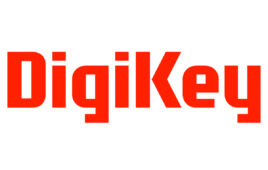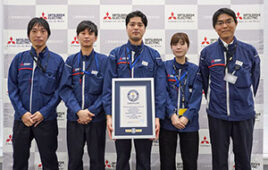 By Mark Jones
By Mark Jones
Many readers of Design World will likely recall gifts of Lego, and maybe some of them will be giving Lego (curiously, a word that is both singular and plural) this season. Lego bricks, as we know them today, came on the market in 1958. Other shapes have been added. Electronic controls have been added. Characters have been added. Still, the bricks of 1958 and the bricks of today are interchangeable — a testament to the perfection of the design; Lego bricks endure. Lego is still on a quest to be more sustainable, a quest I both admire and yet see as unnecessary.
Thirteen cubic feet of Lego still reside in my basement, about one for each of my son’s Lego-consuming years. Lego were a significant part of his growing up. That’s why Lego’s quest to become more sustainable caught my attention. The effort isn’t going well. I’m not happy about their failure, but I’ve found that the effort to replace the polymer as misplaced or over-hyped.
Bricks are made of ABS, acrylonitrile butadiene styrene, polymer. ABS is an engineering thermoplastic — tough, durable, hard, and with a nice shine. It holds its shape. It doesn’t cold creep, a trait necessary for maintaining the mechanical integrity of structures. The characteristic click you get when bricks are pushed together, what Lego calls “clutch power,” is hard to get with other polymers.
As good as ABS is, the environmental footprint is a downside. The three monomers all come from fossil resources. CO2 is emitted, about 3 pounds for each pound of ABS made. In 2012, Lego announced a goal of substituting sustainable alternatives by 2030. In 2015, it founded a Sustainable Materials Centre, a $150 million effort researching and developing sustainable materials for its products and packaging. In 2015, headlines announced Lego was moving away from plastic bricks, a horrible misinterpretation of statements about finding suitable polymers based on renewable resources. They never found a suitable alternative. Lego moved to recycled polymer, PET from bottles. As of September 2023, those efforts have ended.
I’ve followed their sustainability efforts with some skepticism. Bricks use around 100,000 metric tons of ABS per year. That’s about 0.8% of all ABS production, 0.03% of all plastic production. Lego bricks are almost an inconsequential plastic use. It isn’t a significant part of my footprint either.
Like most Americans, my footprint is house, car, food, and the other 8-10%. I figure 1% is insignificant. Thanks to Lego fanatics on the internet and researchers giving an average footprint by zip code, I estimate our household would need to consume 62,000 ABS Lego bricks per year for Lego to be a 1% contributor — or eight 7541-piece Millennium Falcon sets, almost $7,000 per year. We were never close.
Offsets are common in sustainability, especially for CO2. Saving 7 gal of gasoline offsets one Millennium Falcon set. Easily done, but there is something better than offsets. I want to improve end-of-life. Or, actually, not to end the life of Lego.
Rather than changing the material, Lego should change the use pattern. Lego are indestructible. There is a limited number of shapes and colors. They are set up perfectly for reuse. Rather than make new bricks, Lego should clean, sort, and repackage sets. No need to melt and reprocess the ABS, the bricks are interchangeable, unchanged over decades. Perfect for use again and again. With the bricks in my basement, and basements all around the world, Lego may never have to make another brick. We may already be past peak brick.
Lego is doing many things right. They are transparently telling the story of their journey to sustainability. They’ve reduced unnecessary packaging and streamlined operations. They employ lifecycle thinking to drive their decisions. But I’m pulling for a new paradigm, not a new polymer. Reuse is better than ABS replacement.
You may also like:
Filed Under: NEWS • PROFILES • EDITORIALS, Commentaries • insights • Technical thinking








